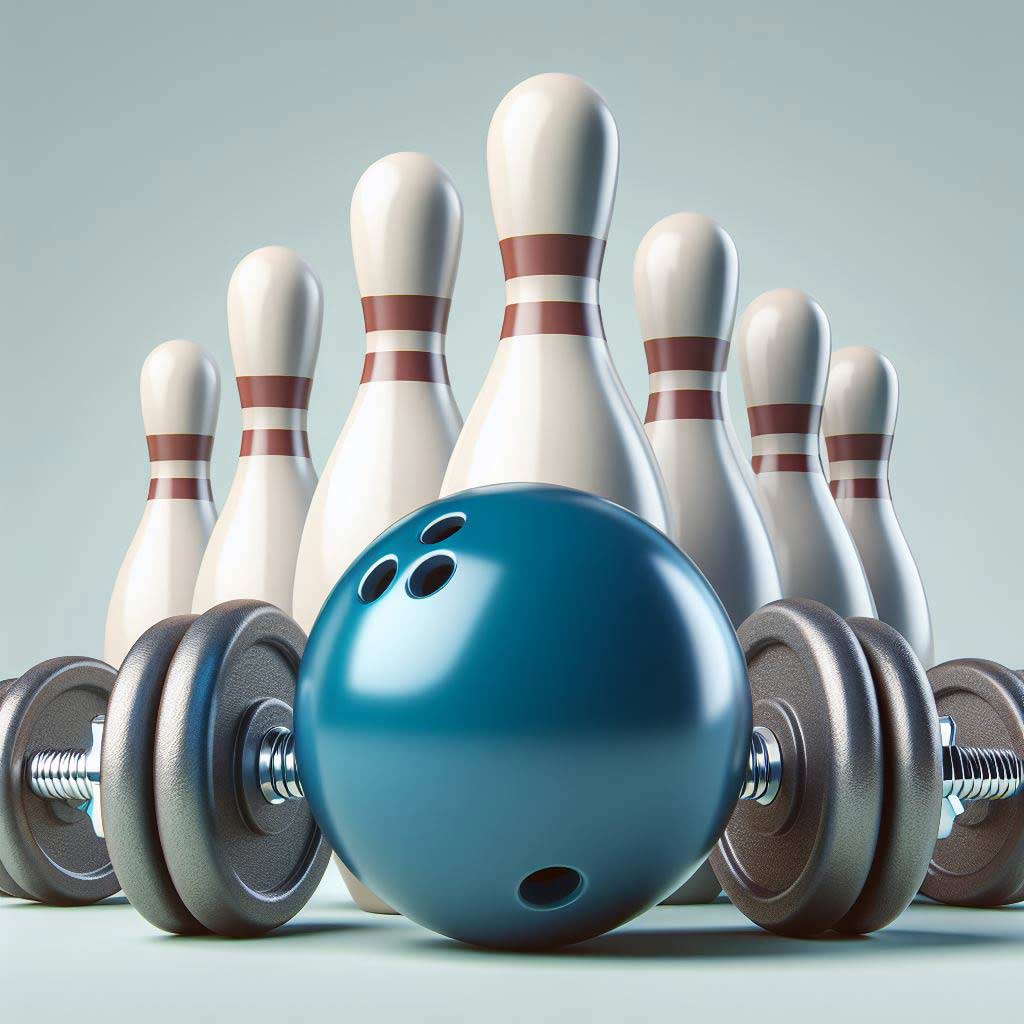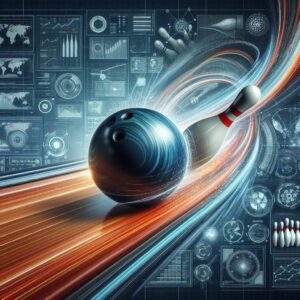Bowling is a sport that conjures stereotypical images of overweight men sporting hideous patterned shirts and holding beers in a smoke-filled bowling alley.
Hardly a peek athletic picture. But contrary to these outdated stereotypes, more and more medical and fitness experts are recognizing bowling as a legitimate active sport, meeting guidelines for moderate physical activity set forth by leading health organizations.
Beyond old stigmas, bowling turns out to provide an array of physical, mental, and social benefits associated with sports and fitness.
But is bowling really enough of a physical activity to be considered an actual sport? Let’s weigh the evidence.
The Physical Activity in a Bowling Match
Bowling requires far more physical exertion than the casual observer gives it credit for. First off, scoring is based on throwing a heavy ball (between 6 to 16 pounds) often repeatedly for the duration of play. The swing technique alone engages key muscle groups.
“The delivery of a bowling ball is a multi-step coordinated action involving trunk rotation, multi-planar shoulder girdle movements, accuracy in targeting, sliding, and many postural adaptations.”
[Harvard Medical Journal]
Simply heaving a weighty ball 60 feet down a lane over and over engages muscles throughout the body from shoulders to fingers.
But it gets even more physically demanding. The bowler often has to swiftly walk back after each throw to retrieve additional balls and get ready for the next frame, covering around 0.75 miles per 3-game series. This cardio movement helps bowling measure up to activities more traditionally considered sports.
Let’s break down key physical aspects:
Muscle Activation
Bowling activates various muscle groups:
- Deltoids, rotator cuff – coordinate shoulder and arm motion
- Trapezius muscles – neck and upper back engaged throwing ball
- Latissimus dorsi – broad back muscles swing bowling arm
- Gluteus maximus – prime mover to begin slide step
- Quadriceps – steady slide requires leg strength
- Forearm muscles – grip ball through fingers and thumb
Almost all major muscle groups participate in bowling, if not through throwing then through essential balancing actions.
Calorie Burn
A 150-pound person burns the following bowling:
- 30 minutes: 149 calories
- 1 hour: 298 calories
- 2 hours: 596 calories
Measuring around 600 calories for a 3-game match, bowling offers solid calorie-burning physical activity, in line with recreational sports like softball or volleyball.
Game Movement
Bowlers log serious mileage traversing alley ways tossing balls. Typical distances:
- Stride length sliding: 24-36 inches
- Walk back from throw: 25 feet
- Total walking a game: 1,320 feet = 0.25 mile
- 3 game series: 0.75 mile+ walking
Combining repetitive ball throwing, sliding steps, walking each frame, and swinging arms, bowling constitutes respectable physical activity and cannot be labeled sedentary.
Bowling Meets Official Guidelines for Moderate Activity
But does bowling really qualify as a sport? Well, according to guidelines, bowling meets the criteria for a recreational activity providing documented health benefits associated with exercise.
To classify exercise intensity, experts reference MET values – Metabolic Equivalent of Task. This measures ratio comparing energy expended during an activity to energy expended at rest.
General intensity categories set by the CDC Physical Activity Guidelines for Americans:
- Light intensity: 1.1 to 2.9 METs
- Moderate intensity: 3.0 to 5.9 METs
- Vigorous intensity: 6+ METs
Bowling falls into 3.8 to 4.2 MET range averaging 4.0 – securely meeting benchmarks for moderate physical activity according to accepted health parameters.
Another metric confirms bowling deserves moderate intensity sport classification. Based on Compendium of Physical Activities, bowling meets 3+ thresholds for absolute intensity categorized alongside activities like golf, sail boating, recreational badminton and table tennis.
So bowling sits solidly in recreational sport territory based on measurable physical output. Of course, more demanding competitive bowling burns even higher energy signaling an athletic specialized form.
The Fitness Benefits of Bowling
Bowling delivers tangible physical fitness payoffs beyond just casual fun. Committed bowling yields genuine health gains:
Weight Loss
Bowling a single game for 1 hour torches nearly 300 calories – equal to 30 minutes of running at 10 min/mile pace. Bowling just twice a week coupled with healthy eating supports sustainable fat loss.
Muscle Toning
Heaving weighted balls repeatedly tones core stomach area along with shoulders, arms and upper back. Sustained bowling builds definition in these constantly engaged muscle groups.
Cardiovascular Health
Any activity sustaining an accelerated heart rate provides cardiovascular benefits. Bowling ticks this box with nearly constant movement walking, sliding and swinging arms for duration of matches. Just as golf and tennis builds stamina, so too does committed bowling with blood pumping.
Injury Prevention
Bowling enhances balance, hand-eye coordination and overall body awareness – all lending to injury prevention in everyday life.
Proper bowling motions utilizing stable footing and controlled multi-plane movements translate to fall prevention.
Stress Relief
Mental concentration combating distraction, executing coordinated motions, and compartmentalizing negative thoughts between throws – all bolster focus and relieve mental stress through the sport of bowling.
Beyond physical technique, competitive bowling success requires mental acuity, emotional regulation and refined focus – attributes bowling helps sharpen and that carry over lowering anxiety in all aspects of life.
Bowling Leagues and Competitions
Far beyond just recreation, proof bowling qualifies as an athletic sport comes through professional tournaments and devoted competitors.
The Professional Bowlers Association (PBA) oversees major competitions globally with multi-event tours sponsored by brands like Go Bowling and Fox Sports.
Game formats span from multi-week contests to cutthroat single elimination brackets demanding peak performance.
Top competitors display elite attributes like precision accuracy, nerves of steel, sharp situational strategizing, and the fitness level to sustain high performance stamina for hours at a time under the lights.
These pros personify bowling as a sport – committing 25+ hours a week training, practicing advanced techniques, analyzing lane conditions and customizing high-tech bowling balls tailored optimizing strikes.
In individual regional pro shops, storied coaches drive aspiring youth bowlers through intense conditioning regimens before youth tournaments and scholarship opportunities.
Parents invest in personalized bowling balls, shoes, rosin bags and microfiber towels as bowling’s equipment arms race professionalizes further even amongst amateur ranks.
Such fierce competition and professional infrastructure elevate bowling earning designation as a serious sport now supported from childhood to fortune-staked championships.
Is Bowling an Active Sport? Conclusion
The weight of evidence definitively positions bowling as an active recreational sport embedded in competitive professional circuits and lifestyle fitness cultures.
Combining physical prowess, technical mastery, mental concentration, emotion regulation, strategy, specialized skill training, and now even wearable tech analytics, bowling mirrors recognized sports in all facets minus outdated stereotypes.
Surpassing casual notions, medical experts confirm bowling activates all major muscle groups, meets guidelines for moderate-intensity activity, elevates heart rate, and leads to tangible fitness benefits like calorie burn, lean muscle development, and injury prevention.
So next time you lace up bowling shoes, channel confidence from facts classifying bowling on par with activities ubiquitously considered sports like golf, tennis, and competitive table tennis.
Just don’t channel that confidence too strongly shattering bowling ball tools of a rising athletic sport now optimized spiraling towards strikes.
Frequently Asked Questions
Is bowling a sport or activity?
Bowling is considered both a sport and recreational activity. It meets criteria as a moderately intense physical activity with competitive leagues and tournaments, qualifying it officially as a sport.
Does bowling count as physical activity?
Yes. Bowling involves repeated motions like swinging a weighted ball, sliding steps, walking back and forth, balancing, gripping – stimulating cardiovascular, muscle toning and calorie burning effects.
Is bowling a low-impact sport?
Bowling is considered low-impact compared to higher strain activities like running. However, bowling can still overwork muscles leading to soreness for beginners. Using proper technique mitigates injury risk.
Does bowling make you fit?
Dedicated bowling burns calories, engages all major muscle groups, and improves balance and coordination. Bowling 2-3 times per week aids weight loss goals and general fitness.
Why do people say bowling is not a sport?
Outdated stereotypes of bowling as an easy hobby with little physicality causes some to not associate it with proper sports. But modern data proves bowling is athletically demanding.
Is bowling an easy sport?
Bowling well against competition requires refined skill – choosing proper balls, adjusting approach, perfecting swing plane and release, analyzing lane oil patterns. So while bowling is low-impact, bowing proficiently takes commitment.
Can I lose weight bowling?
Yes. A 150 pound person can burn nearly 300 calories bowling for one hour. Combined with a healthy diet, bowling constitutes great cardio activity supporting weight loss.
Can bowling build muscle?
Bowling tones core abdominal muscles while strengthening shoulders, biceps, forearms and upper back through repeated swinging motions utilizing various muscle groups.
Why is my body sore after bowling?
Bowling works stabilizer muscles not always activated in normal daily motions. Soreness after starting bowling is common while the body adjusts to using new muscle groups and motions required delivering bowling balls.





